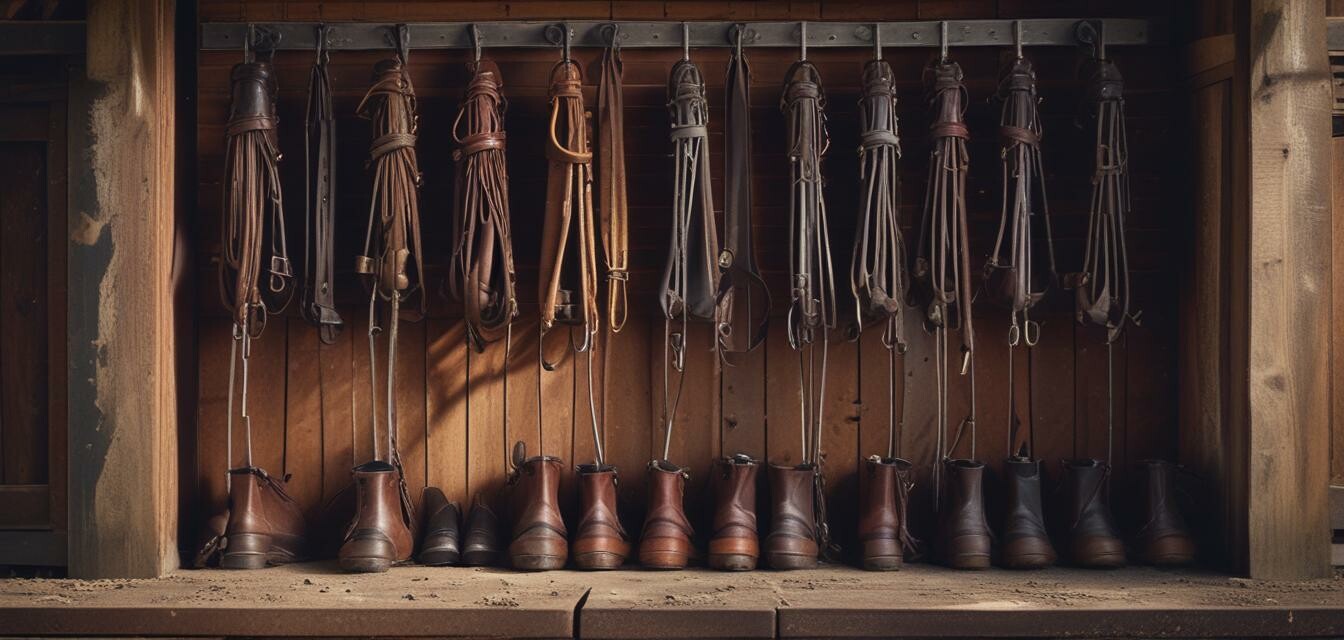
Best Practices for Cleaning Your Riding Gear
Key Takeaways
- Regularly clean your riding gear to maintain its quality.
- Different materials require specific cleaning methods.
- Using the right products can prolong the life of your equipment.
- Proper storage is essential for preserving your gear.
- Consistent maintenance eliminates buildup and enhances performance.
Maintaining your riding gear is essential for both safety and longevity. Whether you are a seasoned equestrian or a beginner, understanding how to properly clean and care for your gear will ensure it remains in top condition. In this article, we will cover essential tips and tricks for cleaning various types of riding gear.
Why Cleaning Your Riding Gear Is Important
Cleaning your riding gear not only prolongs its life but also ensures it functions correctly. Dirty gear can lead to discomfort for both rider and horse, potentially causing injuries or accidents. Regular cleaning helps:
- Prevent damage to materials.
- Avoid buildup of dirt and bacteria.
- Maintain a professional appearance.
- Enhance the performance of your equipment.
Types of Riding Gear and Cleaning Methods
| Type of Gear | Recommended Cleaning Method | Products to Use |
|---|---|---|
| Saddles | Wipe with a damp cloth; use saddle soap; condition leather. | Leather cleaner, saddle soap, leather conditioner. |
| Bridles | Soak straps in warm water; clean with a sponge; rinse. | Warm water, sponge, leather conditioner. |
| Riding Boots | Wipe off mud; clean with boot cleaner; polish. | Boot cleaner, polish, soft cloth. |
| Blankets and Sheets | Machine wash or hand wash; air dry. | Detergent, fabric softener (optional), air drying. |
| Horse Tack | Soak in hot water; scrub with a brush; dry thoroughly. | Hot water, brushing tools. |
Step-by-Step Cleaning Process
For Leather Gear
- Remove any dirt or debris using a dry cloth or brush.
- Use a damp cloth for stubborn stains.
- Lather saddle soap with water and apply with a soft sponge.
- Rinse the sponge and wipe off the soap.
- Condition the leather to keep it supple.
For Fabric Gear
- Shake out any loose dirt or debris.
- Check care labels for washing instructions.
- Use a gentle cycle in the washing machine or soak in warm soapy water.
- Air dry or tumble dry on low heat—avoid high heat to prevent shrinkage.
Storage Tips for Your Riding Gear
How you store your riding gear plays a significant role in its lifespan. Here are some effective storage tips:
- Store saddles with the gullet positioned upwards.
- Hang bridles on hooks or bridles racks to avoid creasing.
- Keep boots upright using boot trees.
- Ensure blankets are dry before storing to prevent mildew.
Beginner Tips for Gear Maintenance
- Establish a routine cleaning schedule—weekly or bi-weekly.
- Invest in quality cleaning products suited to your gear material.
- Keep a small cleaning kit at the stable for convenience.
- Always allow items to dry completely before storing.
Pros
- Prolongs the life of your gear.
- Enhances comfort during riding.
- Maintains a professional appearance.
- Prevents costly repairs or replacements.
Cons
- Time-consuming initially.
- Requires access to specific cleaning supplies.
- May require some learning curve for proper techniques.
Conclusion
Regular cleaning and maintenance of your riding gear are fundamental practices for both amateurs and professionals alike. By following the best practices outlined above, you can ensure your equipment remains in top-notch condition. Never underestimate the importance of proper gear care—it brings longevity to your riding experience.
For more information on selecting the right riding apparel or tips for riders, be sure to explore our other articles. Happy riding!
